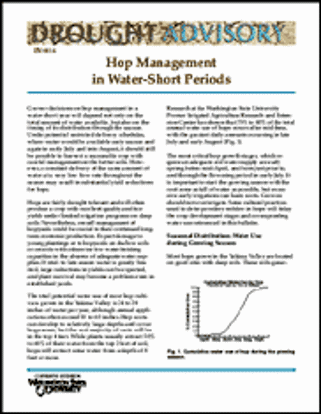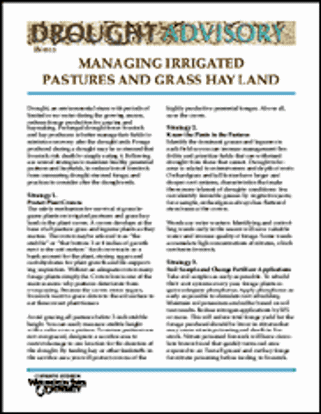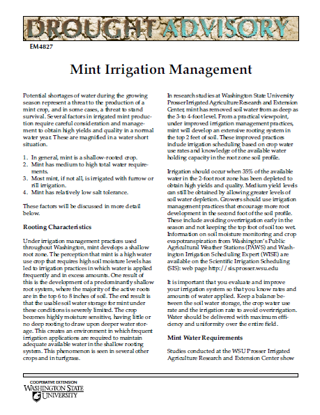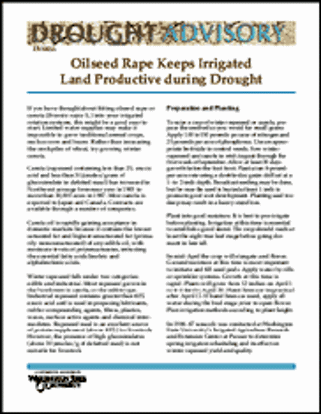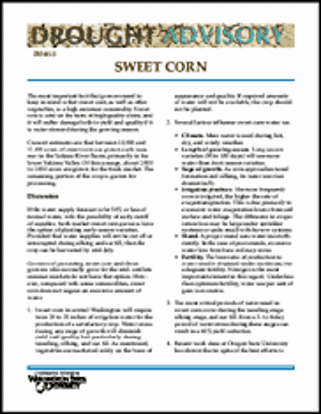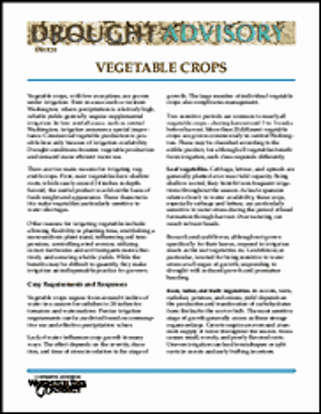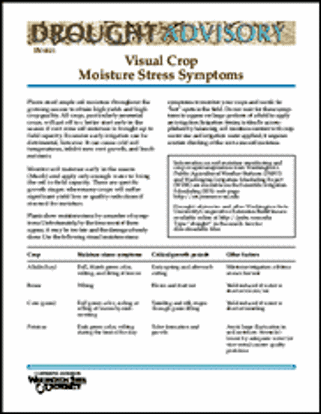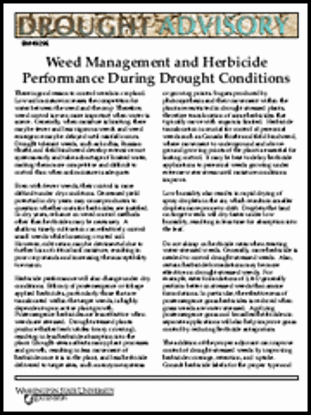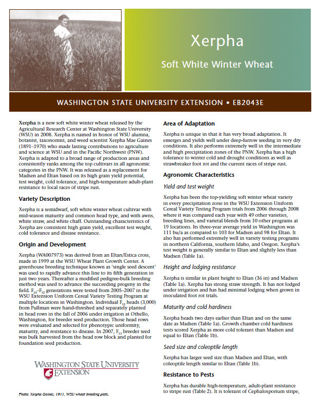You have no items in your shopping cart.
Plants
Plants
WSU Drought Advisory: Hop Management in Water-Short Periods
Hop plants are fairly drought resistant. Author offers measures to ensure greater success under dry conditions. Discusses factors influencing some cultivars and water and fertilization patterns for di ...
$0.00
WSU Drought Advisory: Managing Irrigated Pastures and Grass Hay Land
Drought-stressed hay and forage can be higher in nitrates than usual. Prevent overgrazing to protect the pasture, and test cut hay and forage for nitrate levels to protect your livestock. Authors offe ...
$0.00
WSU Drought Advisory: Mint Irrigation Management
This drought advisory bulletin discusses the water requirements of mint. Since mint needs water all summer and has a shallow root system and low salt tolerance, growers have to focus on getting maximu ...
$0.00
WSU Drought Advisory: Oilseed Rape Keeps Irrigated Land Productive
This drought advisory bulletin discusses the cultivation, irrigation, and harvest needs of oilseed rape or canola as a rotation crop during drought years. Rape is a good alternative crop because most ...
$0.00
WSU Drought Advisory: Sweet Corn
Sweet corn growers must watch long-term forecasts and be flexible in dry spells to manage this high moisture commodity. Explains the general needs of corn, the influence of several factors, and the re ...
$0.00
WSU Drought Advisory: Vegetable Crops
Irrigation with sufficient water is vital to productive, profitable vegetable crops. This drought advisory describes 11 strategies for maximizing vegetable quality and profit when the water supply is ...
$0.00
WSU Drought Advisory: Visual Crop Moisture Stress Symptoms
This drought advisory is a chart that lists moisture stress symptoms, critical growth periods, and other important irrigation-related factors for common Washington crops, including alfalfa, beans, cor ...
$0.00
WSU Drought Advisory: Weed Management and Herbicide Performance During Drought Conditions
Learn how drought affects both weed management and herbicide performance in this bulletin. Drought tolerant weeds may be more competitive and difficult to control. The efficacy of various herbicides c ...
$0.00
Xerpha Soft White Winter Wheat
Xerpha is a new, soft white winter wheat released by the Agricultural Research Center at Washington State University in 2008. Named for a pioneering WSU alumna and weed scientist (Xerpha Mae Gaines), ...
$0.00

